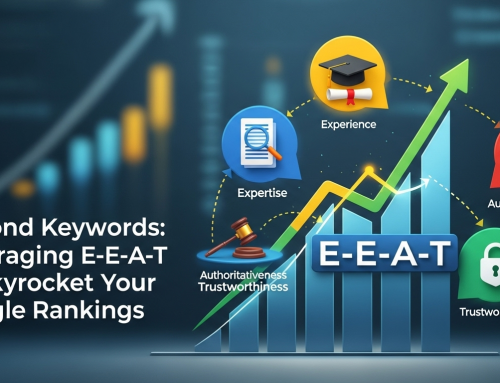Many businesses treat Pay-Per-Click (PPC) advertising and Search Engine Optimization (SEO) as competing rivals, forcing them to choose between “fast results” and “long-term growth.” This is a mistake. The most effective digital strategies recognize that PPC and SEO are not rivals, but a powerful, complementary duo. When aligned, this power couple delivers unmatched visibility, deeper data insights, and a more strategic use of your marketing budget, ultimately maximizing your Search Engine Ranking dominance.
1. Dominating the Search Engine Results Page (SERP)
The most immediate benefit of combining PPC and SEO is the ability to occupy more valuable real estate on the Search Engine Results Page (SERP).
-
Double Visibility: When your brand appears as a paid ad (PPC) at the top and an organic listing (SEO) further down the page for the same keyword, you effectively push competitors off the first screen.
-
Increased Trust: Studies show that when a user sees a brand in both the paid and organic spots, it significantly increases brand trust and credibility, leading to a higher overall Click-Through Rate (CTR) across both channels.
2. PPC as an SEO Data Lab
PPC campaigns offer immediate, precise, and inexpensive data that is incredibly valuable for informing your long-term SEO strategy. PPC becomes your laboratory for testing keywords and messaging before committing expensive time and resources to long-form SEO content.
-
Keyword Intelligence: PPC quickly reveals which high-intent keywords actually lead to conversions and sales, not just clicks. You can then prioritize those high-converting terms for your time-intensive SEO content strategy. Why waste six months optimizing a page organically if PPC data shows the keyword doesn’t convert?
-
A/B Testing Messaging: You can use PPC ads to quickly A/B test different headlines (Title Tags) and descriptions (Meta Descriptions). The ad copy that generates the highest CTR can then be rolled out to your organic listings, improving your Keyword Ranking performance without any additional ad spend.
3. SEO Improves PPC Performance
The relationship is a two-way street. A strong SEO foundation can actually lower the cost of your PPC campaigns.
-
Better Quality Score: Google’s Ad Rank algorithm heavily relies on Quality Score, which measures the relevance and quality of your ad and, crucially, your landing page. Pages that are well-optimized for speed, content relevance, and user experience (all core elements of SEO) achieve a higher Quality Score.
-
Lower Cost-Per-Click (CPC): A higher Quality Score directly translates into a lower CPC and better ad position. Essentially, your investment in high-quality SEO content lowers the running cost of your PPC ads.
4. A Strategy for the Full Customer Journey
SEO and PPC are often aligned with different stages of the buying funnel:
-
SEO (Top/Middle of Funnel): Focuses on “informational” searches (e.g., “Why should invest in SEO?”), building awareness and authority over time.
-
PPC (Bottom of Funnel): Targets “transactional” searches (e.g., “buy SEO tools”), capturing the customer when they are ready to convert immediately.
By integrating both, you ensure your brand is present for every touchpoint, guiding the user from awareness (organic content) to conversion (paid ads or an optimized landing page).
Ultimately, thinking of PPC and SEO as an integrated search engine marketing (SEM) strategy, rather than two separate departments, allows businesses to maximize their presence, leverage data intelligently, and build a more resilient and cost-effective marketing engine.
Conclusion
The question is no longer whether to invest in SEO or PPC, but rather how to make them work together. By viewing PPC and SEO as a unified Search Engine Marketing (SEM) strategy, you transform your online visibility from a fragmented effort into a cohesive, dominating force. SEO delivers the long-term, cost-effective authority that builds brand trust, while PPC provides the immediate data and fast-acting traffic necessary for testing, scaling, and closing deals. Ultimately, integrating these two strategies ensures your brand is present for customers at every stage of their journey—from initial research to final purchase—providing the stability, data-driven insight, and sustained market dominance required to succeed in the competitive landscape of Search Engine Ranking today.





